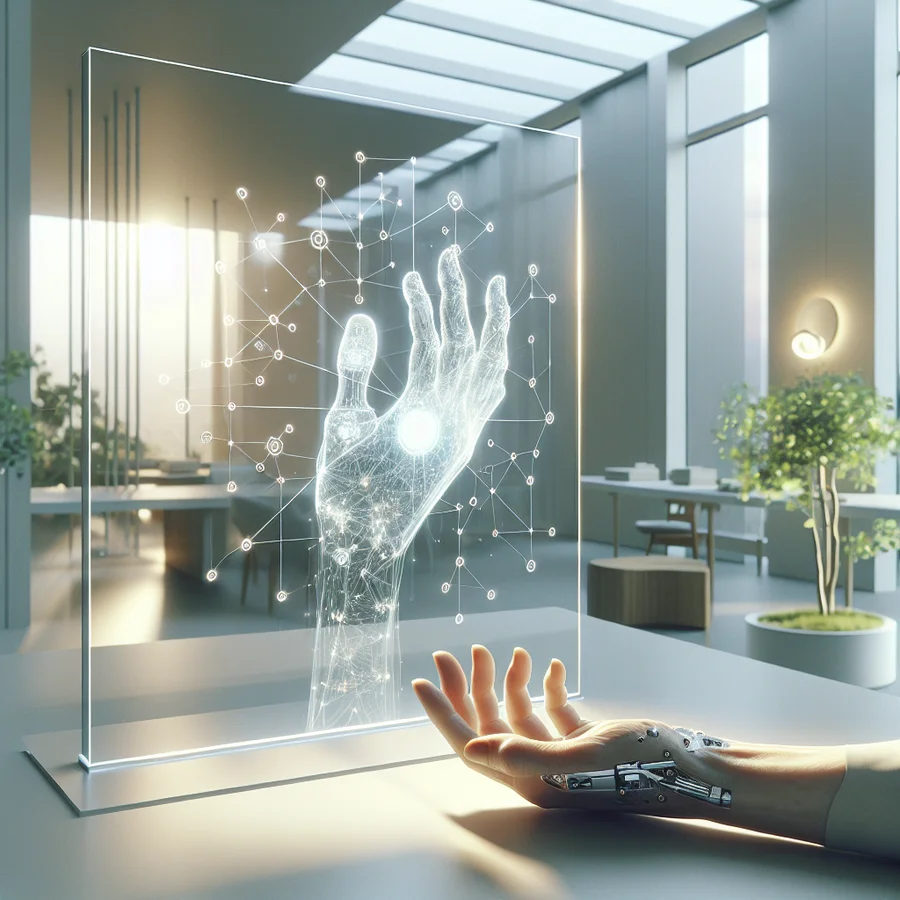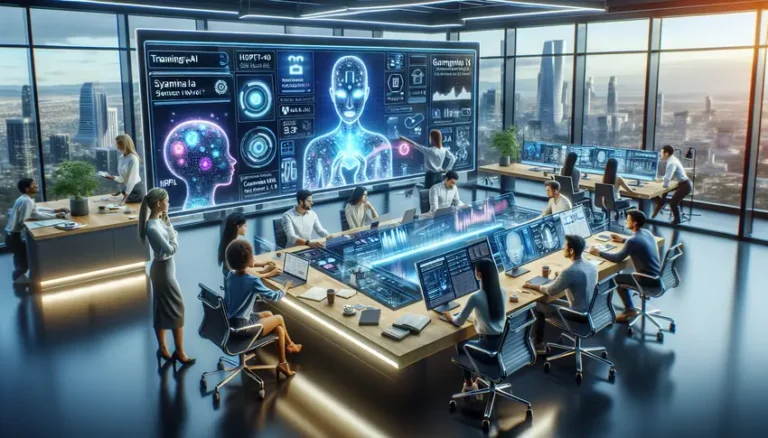The Future of AI Tools: Trends to Watch in 2025
Artificial intelligence (AI) is rapidly evolving. It’s no longer just a futuristic concept. By 2025, AI tools will reshape how we live and work. This guide explores the key trends to watch, helping you understand what’s coming and how to prepare for the future of AI tools.
This article will cover the most exciting advancements and potential challenges. We’ll explore how AI will impact various industries and our daily lives. Get ready to dive into the world of AI and see what 2025 has in store.
Understanding the Current AI Landscape
Before we look ahead, let’s quickly recap where we are now. Generative AI, which creates new content, has exploded in popularity. We’ve seen impressive AI image and video generators. Chatbots like ChatGPT have become commonplace. But the initial excitement is now tempered with a dose of reality. People are starting to understand the limitations and costs associated with AI.
Companies are now seeking tangible results from AI, not just prototypes. They want to see reduced costs, increased efficiency, and a clear return on investment. This shift towards pragmatism will define the future of AI tools in 2025.
Key AI Trends to Watch in 2025
Several exciting trends are set to shape the AI landscape in 2025. These trends will impact businesses, consumers, and society as a whole. Let’s explore these trends in detail:
1. Agentic AI: The Rise of Autonomous Assistants
Imagine AI that doesn’t just respond to commands, but proactively takes action. That’s the power of agentic AI. These AI agents are designed to execute specialized tasks autonomously. They use large language models (LLMs) to understand requests and make decisions independently.
Reminder: Agentic AI is still in its early stages. Human oversight remains important. But even with current limitations, AI agents offer huge potential across many industries.
Instead of just providing information, these agents can manage workflows and handle routine actions. Think of AI scheduling meetings, analyzing data, or even making purchases on your behalf. Salesforce’s Agentforce is an example of this, designed to autonomously handle tasks for business users.
Note: Agentic AI’s independence also brings new risks. We need to consider the ethical implications of AI making decisions with real-world consequences.
2. Multimodal AI: Beyond Text-Based Interactions
For a while, AI has been synonymous with large language models and chatbots. But the future of AI tools extends far beyond text. Multimodal AI models can process and generate different types of data, including audio, video, and images. This opens up exciting possibilities.
Imagine AI that can understand a photo and write a relevant caption. Or AI that can generate a video from a text description. OpenAI’s Sora (text-to-video) and ElevenLabs’ AI voice generator are examples of this trend. These models can handle non-text data types, such as audio, video and images.
Example: Google DeepMind unveiled Genie, a generative model that turns a still image into a 2D platform game that players can interact with.
Robotics is another area where AI is moving beyond text. AI-powered robots can interact with the physical world, performing tasks in manufacturing, healthcare, and more.
3. Generative Virtual Playgrounds: Immersive Experiences
Following the rise of generative images and videos, generative virtual worlds are next. This technology creates interactive and dynamic virtual environments. These virtual worlds can be used for entertainment, training, and research.
Example: AI startups like Decart and Etched are creating Minecraft hacks where every frame of the game is generated on the fly as you play.
These virtual playgrounds have several applications:
- Video Games: Turning sketches into playable environments on the fly.
- Robotics Training: Creating countless virtual worlds for robots to learn through trial and error.
- Spatial Intelligence: Helping machines interpret and interact with the real world.
These virtual worlds can provide valuable data for training robots and developing AI that understands spatial relationships.
4. AI in Science: Accelerating Discovery
One of the most promising applications of AI is accelerating scientific discovery. AI can analyze vast datasets, identify patterns, and generate hypotheses. This can significantly speed up research in various fields, from medicine to materials science.
Reminder: The Nobel Prize in Chemistry was awarded to the creators of AlphaFold, an AI tool that solves protein folding. This highlights AI’s potential in scientific research.
Meta has released data sets and models to help scientists discover new materials faster. Hugging Face and Entalpic have launched LeMaterial, an open-source project to simplify materials research. OpenAI is also letting scientists test its models to support their research.
Example: Anthropic founder Dario Amodei envisions AI as a “virtual biologist” that can perform all the tasks biologists do.
5. AI and National Security: A Growing Partnership
AI companies are increasingly partnering with national security agencies. This trend is driven by the potential for AI to enhance border surveillance, intelligence gathering, and other national security tasks.
The US military is launching initiatives to adopt AI, such as the Replicator program (small drones) and the Artificial Intelligence Rapid Capabilities Cell. European militaries are also under pressure to increase their tech investment.
Note: This trend raises ethical questions about the use of AI in defense and surveillance. Companies must grapple with whether working on defense projects contradicts their values.
6. Hyper-Personalization: Tailoring Experiences to Individuals
AI-powered personalization is already common, but it’s about to get even more precise. By 2025, hyper-personalization will influence real-time interactions and everyday tech. This means tailoring experiences to individual preferences, needs, and goals.
Example: A fitness app that analyzes your energy levels and goals to recommend tailored workouts.
AI will be integrated into everyday devices, from smart home assistants to wearable devices. This will create seamless, AI-driven ecosystems tailored to individual preferences.
7. AI as a Creative Ally: Enhancing Human Creativity
Generative AI is not just a tool for automation. It’s also a creative partner. By 2025, businesses will rely on AI tools for drafting ideas and generating content. AI can assist with marketing, design, and other creative tasks.
Example: Using AI to create 50 unique social media posts in a single afternoon.
Reminder: AI is great for starting drafts, but don’t rely on it to replace human creativity. Your unique voice and perspective still matter.
8. Decision Intelligence: Guiding Smarter Choices
AI is evolving from simply providing data to offering clear recommendations. Decision intelligence analyzes complex scenarios and guides businesses to make smarter, faster choices. This helps businesses optimize their operations and improve outcomes.
Example: A retail chain using AI to forecast peak shopping times and adjust staffing schedules in real time.
Actionable Advice: Invest in AI tools that combine data analysis with actionable recommendations. Start with low-risk, high-impact decisions.
9. AI as a Sustainability Enabler: Promoting Eco-Friendly Practices
Sustainability is becoming a key priority for businesses. By 2025, AI will drive the adoption of eco-friendly practices. It will help reduce waste and optimize resources with greater precision.
Example: A bakery using AI to analyze daily sales patterns and bake the right amount of bread to avoid waste.
Actionable Advice: Identify inefficiencies in your operations. Could AI help you save energy, reduce waste, or streamline logistics?
10. Edge AI: Processing Data Locally
Edge AI processes data locally on devices, rather than relying on cloud computing. This delivers faster, more secure, and highly responsive solutions. This trend is driven by the growing demand for real-time applications.
Examples: Self-driving cars, wearable fitness trackers, and smart appliances.
Actionable Advice: If your business uses IoT devices, explore edge AI solutions. Prioritize speed and security, especially for real-time decisions.
11. Ethical AI: Building Trust and Transparency
Businesses that prioritize ethical AI will gain customer trust and loyalty. Transparency, fairness, and privacy will become essential for responsible AI usage. This includes avoiding biases in algorithms and protecting user data.
Example: AI-powered loan approval systems designed to avoid biases that could unfairly disadvantage certain demographics.
Actionable Advice: Audit your AI tools for bias and privacy concerns. Use ethical AI frameworks to guide your practices and communicate your approach openly.
12. AI Literacy: A Necessary Skill for Everyone
As AI becomes more prevalent, AI literacy will be an essential skill for everyone. This includes knowing how to use AI tools, assess their outputs, and understand their limitations. AI literacy is important for executives, developers, and everyday employees.
Note: Developing AI literacy doesn’t necessarily mean learning to code or train models. Experimenting with AI tools is massively helpful.
13. Commoditization of Foundation Models
The generative AI landscape is evolving rapidly. Foundation models are becoming more common. The competitive edge is shifting to businesses that excel at fine-tuning these models or developing specialized tools on top of them.
Analogy: This is similar to the PC industry in the late 1980s and 1990s. Over time, the focus shifted from incremental improvements in specs to factors like cost, UX, and ease of integration.
In a commoditized model landscape, usability, trust, and interoperability with legacy systems are key. AI companies with established ecosystems and user-friendly tools are likely to take the lead.
14. Domain-Specific AI: Tailoring Models to Specific Needs
While some AI labs are pursuing artificial general intelligence (AGI), most business applications don’t require such broad capabilities. Enterprises are increasingly interested in narrow, highly customized models. These models are tailored to specific tasks and industries.
Example: A business application that summarizes unstructured data doesn’t need the versatility of a consumer-facing chatbot.
Businesses should consider who will be using the technology and how. They should also think about the intended use case and the domain it’s being used in.
15. Evolving Regulatory Landscape: Balancing Innovation and Safety
The regulatory landscape for AI is fragmented and rapidly changing. Some regions are implementing stricter regulations, while others are taking a more hands-off approach. This creates challenges for companies operating in multiple regions.
Note: The EU’s AI Act could end up setting de facto standards for companies building or deploying AI worldwide.
There’s a need for regulation that protects the integrity of online speech and prevents impersonation. Regulation should also be responsive to the risk level of specific AI applications.
16. Escalating AI-Related Security Concerns: Protecting Against Cyberattacks
The widespread availability of AI gives threat actors unprecedented access to tools for facilitating cyberattacks. This risk is poised to increase as multimodal models become more sophisticated.
Example: Cybercriminals are using AI for phishing scams and financial fraud. They’re also using AI-generated fake photos and videos to lend credibility to false identities.
Businesses need to treat AI security as a core part of their overall cybersecurity strategies. This includes protecting against adversarial machine learning and data poisoning.
17. AI Changes the Way We Work: Automating Tasks and Enhancing Productivity
AI is already automating many work activities. In fact, existing technologies could automate 60-70% of employees’ time. This will dramatically alter the dynamics of the workplace. Many workplace leaders are welcoming the adoption of AI and machine learning.
Example: AI note-taking services are becoming increasingly popular. Otter AI has transcribed over 1 billion meetings.
Entire industries have the potential to be transformed by AI. For example, AI is being used in recruitment to automate tasks and improve efficiency.
18. AI Changes the Finance Landscape: Improving Efficiency and Accuracy
AI-powered improvements in productivity could add significant value to the banking sector. AI can increase the industry’s profits by automating tasks and improving accuracy. Autonomous finance includes everything from customer service chatbots to automated forecasting to AI-powered fraud detection.
Example: AI is being used in fraud prevention to comb datasets for sophisticated fraud patterns. It’s also being used in risk management to identify anomalies in investments and loans.
19. Healthcare Further Embraces AI: Transforming Patient Care and Drug Discovery
AI has the potential to automate a significant portion of the work done by healthcare professionals. This can lead to cost savings and improved patient care. AI is already being used for radiology, pathology, and patient monitoring.
Example: AI is being used in precision medicine to treat patients based on their individual DNA, medical history, and imaging. It’s also being used in pharmaceutical development to speed up the process of getting drugs into the hands of patients.
20. AI Confronts Environmental Questions Head-On: Balancing Benefits and Risks
AI applications could improve sustainability and lead to innovative environmentally-friendly practices. However, the technology behind AI requires massive amounts of computational resources, which can be damaging to the environment. It’s important to balance the benefits and risks of AI in relation to the environment.
Example: AI is being used to make calculations and predictions about the environment based on vast amounts of data. It can see trends and patterns that are nearly impossible for humans to see.
Preparing for the Future of AI Tools
To prepare for the future of AI tools, consider these steps:
- Embrace AI Literacy: Learn the basics of AI and how it can be applied to your work.
- Experiment with AI Tools: Try out different AI tools to see how they can improve your productivity and creativity.
- Focus on Ethical AI: Prioritize transparency, fairness, and privacy when using AI tools.
- Identify Opportunities for Automation: Look for tasks that can be automated with AI to free up your time for more strategic work.
- Stay Informed: Keep up with the latest AI trends and developments.
The Role of Superagency in the AI Era
The concept of “superagency,” as described by Reid Hoffman, highlights how AI can enhance human agency and amplify our potential. Superagency describes a state where individuals, empowered by AI, supercharge their creativity, productivity, and positive impact.
AI can democratize access to knowledge and automate tasks, assuming humans develop and deploy it safely and equitably. This requires leaders to align teams, address AI headwinds, and rewire their companies for change.
Challenges and Considerations
While the future of AI tools is bright, there are challenges to consider:
- Ethical Concerns: Addressing bias, privacy, and security risks.
- Job Displacement: Preparing for potential job losses due to automation.
- Regulatory Uncertainty: Navigating the evolving regulatory landscape.
- Security Threats: Protecting against AI-related cyberattacks.
Addressing these challenges will be crucial to ensuring that AI benefits everyone.
Conclusion
The future of AI tools in 2025 is full of potential. From agentic AI to multimodal models, these trends will transform industries and our daily lives. By embracing AI literacy, focusing on ethical AI, and staying informed, you can prepare for this exciting future. The key is to approach AI thoughtfully, blending its capabilities with human creativity and ethics.
FAQs
What is agentic AI?
Agentic AI refers to AI systems that can operate autonomously and take actions to complete complex tasks. They use large language models to understand requests and make decisions independently.
What is multimodal AI?
Multimodal AI can process and generate different types of data, including text, audio, video, and images. This allows for more versatile and interactive AI applications.
How can AI be used for sustainability?
AI can be used to optimize resource usage, reduce waste, and promote eco-friendly practices. For example, AI can analyze data to identify inefficiencies in energy consumption and logistics.
What are the ethical considerations of AI?
Ethical considerations include addressing bias in algorithms, protecting user privacy, ensuring transparency, and mitigating security risks.
How can I prepare for the future of AI tools?
You can prepare by embracing AI literacy, experimenting with AI tools, focusing on ethical AI, identifying opportunities for automation, and staying informed about the latest AI trends.






